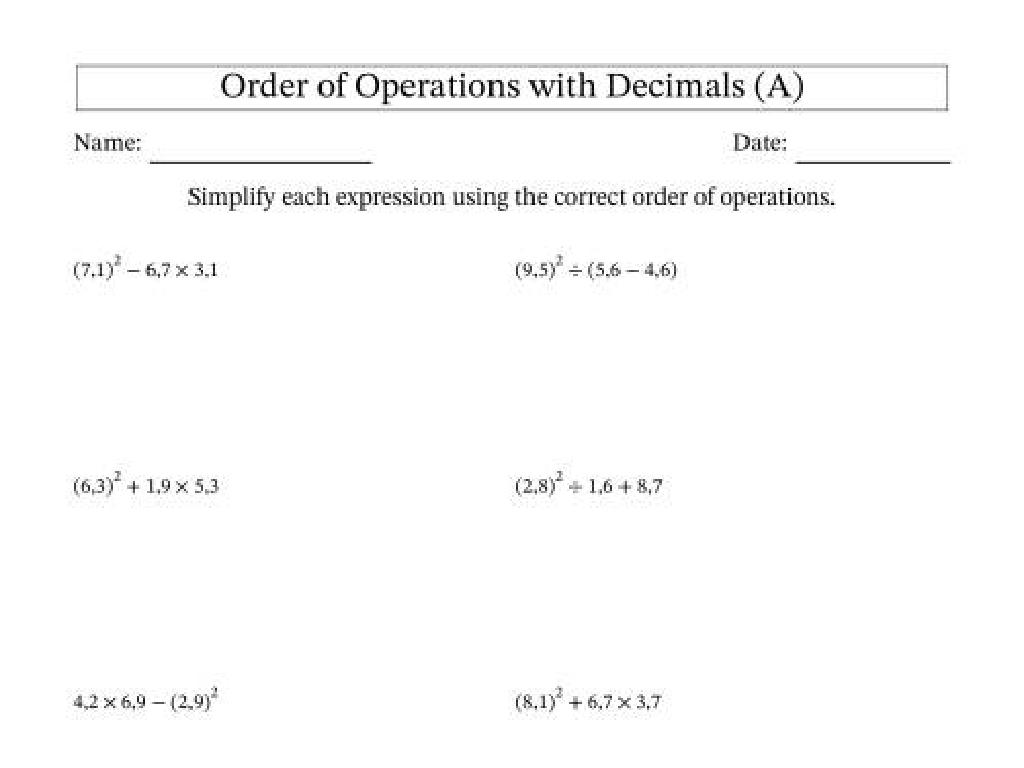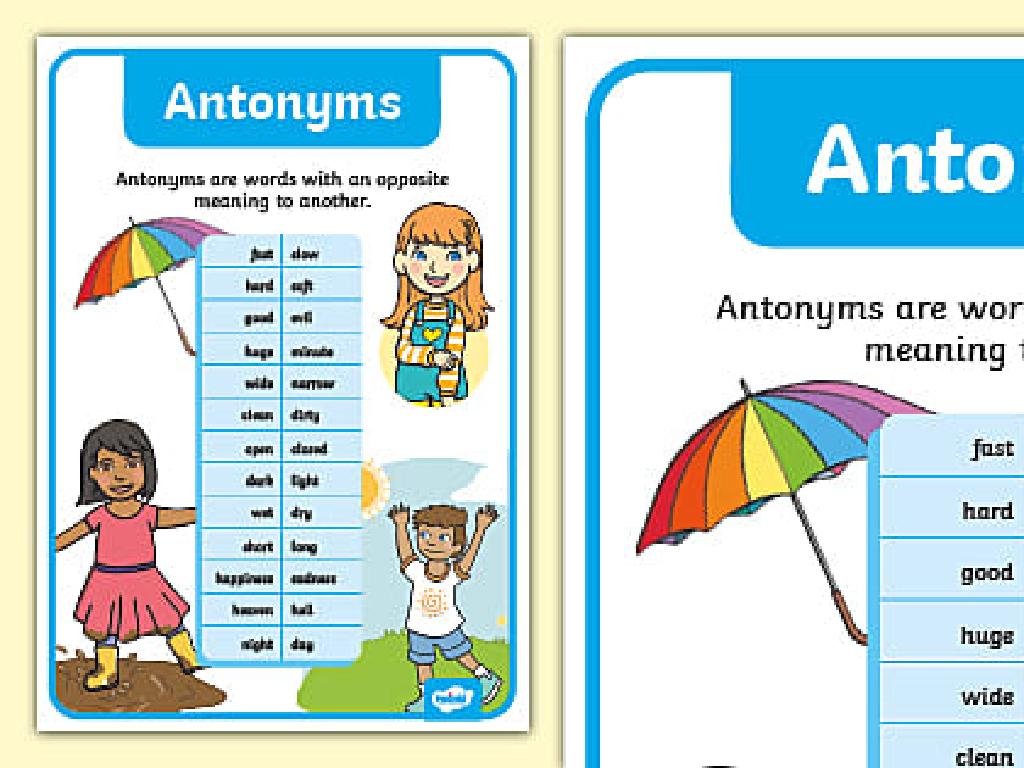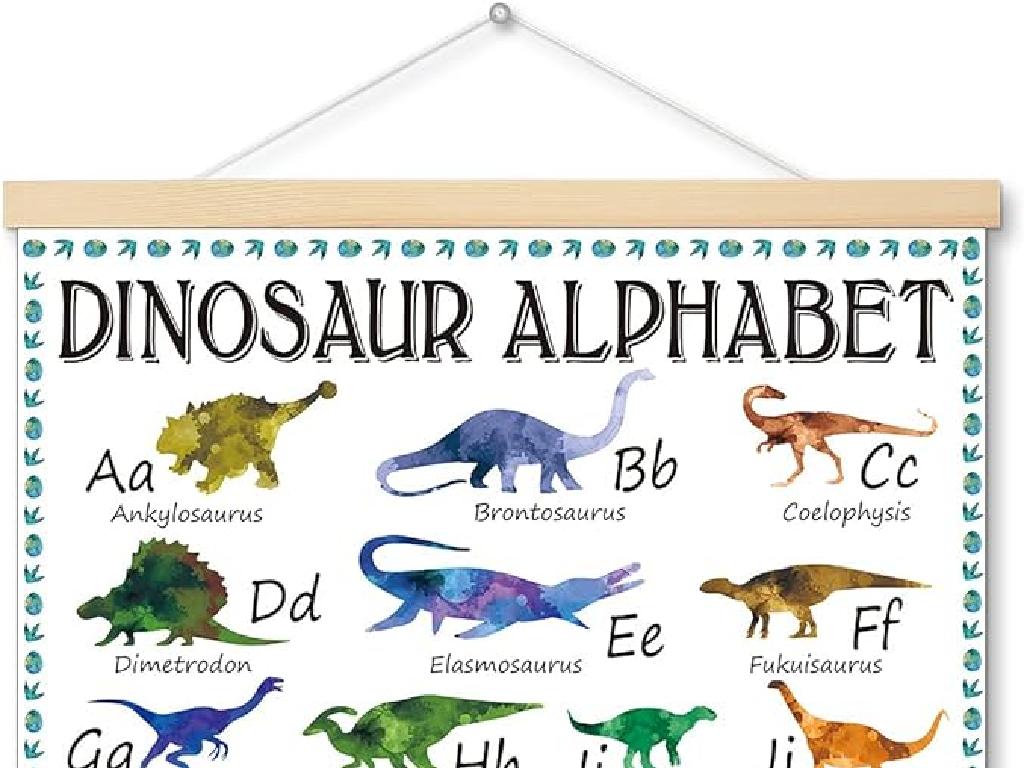Identify Arithmetic And Geometric Sequences
Subject: Math
Grade: Seventh grade
Topic: Sequences
Please LOG IN to download the presentation. Access is available to registered users only.
View More Content
Welcome to Sequences!
– Understanding patterns in sequences
– Patterns are regularities that repeat in a list of numbers.
– Defining sequences in math
– A sequence is an ordered list of numbers following a certain rule.
– Exploring types of sequences
– There are various sequence types, each with unique properties.
– Arithmetic vs. geometric sequences
– Arithmetic sequences change by the same amount; geometric sequences change by a common ratio.
|
This slide introduces the concept of sequences in mathematics, which is a fundamental part of the seventh-grade curriculum. Begin by discussing the idea of patterns and how they can be observed in sequences. Explain that a sequence is simply an ordered set of numbers that follow a specific rule. Highlight the different types of sequences, such as arithmetic, where each term is a fixed number greater than the last, and geometric, where each term is multiplied by a fixed number. Use examples to illustrate these concepts, such as an arithmetic sequence of adding 2 (2, 4, 6, 8, …) and a geometric sequence of multiplying by 3 (3, 9, 27, 81, …). Encourage students to think of their own examples and to recognize sequences in their daily lives.
Exploring Arithmetic Sequences
– Define arithmetic sequence
– A sequence with a constant difference between terms
– Find the common difference
– Subtract any term from the next to find it
– Real-life arithmetic examples
– Heights as kids grow, daily savings plan
– Practice identifying sequences
|
An arithmetic sequence is a list of numbers with a specific pattern where the same amount is added to each term to get the next term. This amount is known as the common difference. To find it, simply subtract one term from the following term. Provide students with relatable examples, such as the yearly increase in their height or a daily savings plan where they save an additional dollar each day. Encourage students to think of other examples from their daily lives. Practice problems can include identifying arithmetic sequences and finding the common difference in various contexts.
Arithmetic Sequence Practice
– Find the common difference
– Look at the difference between terms
– Craft your arithmetic sequence
– Use a starting number and add a fixed number to each term
– Exchange sequences with a partner
– Discuss the differences found
– Explain how you determined the common difference
|
This slide is designed for a class activity focused on arithmetic sequences. Students will first practice identifying the common difference in given sequences, which is the fixed amount added to each term. Then, they will create their own arithmetic sequence by choosing a starting number and adding a consistent number to each subsequent term. Afterward, students will pair up to exchange and discuss their sequences with a partner, explaining how they determined the common difference. This activity will help reinforce their understanding of arithmetic sequences and provide an opportunity for peer learning. Possible activities for different students could include varying the starting number or common difference, comparing sequences to find similarities and differences, or creating real-life scenarios that could be modeled by an arithmetic sequence.
Understanding Geometric Sequences
– Define geometric sequence
– A sequence with a constant ratio between consecutive terms, e.g., 2, 4, 8, 16…
– Find the common ratio
– The ratio is found by dividing a term by its previous term. What’s the ratio for 3, 9, 27, 81?
– Real-life geometric examples
– Examples: bacteria growth, interest rates, and fractal patterns.
– Practice identifying sequences
|
This slide introduces the concept of geometric sequences, which are sequences where each term after the first is found by multiplying the previous term by a fixed, non-zero number called the common ratio. Emphasize the difference between arithmetic and geometric sequences. Provide real-life examples that are relatable to seventh graders, such as the rapid multiplication of bacteria or the increase in money due to interest rates. Encourage students to think of other examples where quantities grow by a constant factor. The slide should also prompt students to practice identifying geometric sequences and finding the common ratio, which is a critical skill in understanding how these sequences work.
Geometric Sequence Practice
– Identifying the common ratio
– The ratio between consecutive terms. Example: In 2, 6, 18, 54, the common ratio is 3.
– Crafting your own sequence
– Use the common ratio to build a sequence. Start with any number!
– Understanding sequence growth
– Geometric sequences grow by multiplying. They can increase or decrease rapidly!
– Class activity: Find & share sequences
|
This slide is aimed at providing students with a practical understanding of geometric sequences. Begin by explaining the concept of the common ratio and how it can be found by dividing any term by the previous term. Encourage students to create their own geometric sequences using a common ratio of their choice, which helps solidify their understanding of how sequences are formed. Discuss the exponential growth or decay of geometric sequences, highlighting the power of multiplication in determining the rate of increase or decrease. The class activity should involve students identifying geometric sequences from real-life examples or their own creations, and sharing their findings with the class. This will foster a collaborative learning environment and allow students to see a variety of sequences and growth patterns.
Comparing Sequences: Arithmetic vs. Geometric
– Distinct features of sequences
– Arithmetic: constant difference; Geometric: constant ratio
– Determining sequence type
– Look for addition/subtraction or multiplication/division patterns
– Group activity: Classify sequences
– Work in groups to identify sequence types from examples
– Discuss findings with class
|
This slide aims to help students distinguish between arithmetic and geometric sequences by focusing on their unique characteristics. Arithmetic sequences have a constant difference between consecutive terms, while geometric sequences have a constant ratio. To determine the type of a given sequence, students should look for patterns of addition or subtraction for arithmetic, and multiplication or division for geometric sequences. The group activity encourages collaborative learning where students classify a list of sequences provided by the teacher. After the activity, each group will discuss their findings, allowing them to learn from each other and reinforce their understanding of the concepts.
Real-World Applications of Sequences
– Sequences observed in nature
– Fibonacci sequence in flower petals, pinecones
– Architectural sequence patterns
– Geometric sequences in famous buildings, bridges
– Rhythmic sequences in music
– Beats and measures form patterns in songs
– Understanding sequences’ importance
|
This slide aims to show students how sequences are not just mathematical concepts but are also integral to the world around us. In nature, the Fibonacci sequence is often observed in the arrangement of leaves, the pattern of seeds in a fruit, and the spiraling of shells. In architecture, sequences determine the proportions and arrangements of elements in structures, creating patterns that are both aesthetically pleasing and structurally sound. Music relies on sequences to establish rhythm and harmony, with notes and pauses creating patterns that are recognizable and enjoyable. By understanding how sequences are applied in various fields, students can appreciate the practicality of what they learn in math class and be inspired to identify sequences in their daily lives.
Class Activity: Sequence Scavenger Hunt
– Find arithmetic/geometric sequences
– Document findings with evidence
– Take pictures or write descriptions
– Choose your best example
– Present to the class
– Explain why it’s a good example
|
This interactive class activity encourages students to explore their environment to find real-life examples of arithmetic and geometric sequences. Instruct students to look for patterns where a constant is added (arithmetic) or multiplied (geometric) to get to the next term. They can take photos or write descriptions of patterns they find, such as the number of petals on flowers (geometric) or the arrangement of seats in a theater (arithmetic). Have them select the most interesting example to share with the class, explaining the sequence and why they chose it. This activity will help solidify their understanding of sequences in a fun, engaging way. Possible activities: counting steps on a staircase, daily temperature changes, or savings account growth.
Sequences: Review and Homework
– Recap arithmetic sequences
An ordered list where each term is derived by adding a constant.
– Recap geometric sequences
A sequence where each term is found by multiplying by a fixed number.
– Homework: Find real-life sequences
Identify and classify sequences you encounter daily.
– Quiz preparation for next class
|
As we conclude today’s lesson on sequences, remember that arithmetic sequences have a common difference between consecutive terms, while geometric sequences have a common ratio. For homework, students are expected to find examples of both types of sequences in their everyday lives, which will help solidify their understanding of the concepts. Encourage them to think creatively and look for patterns in nature, sports, or even their routine activities. Additionally, students should prepare for a quiz during the next class, which will cover the key points of arithmetic and geometric sequences. Provide a study guide with practice problems to assist them in their preparation.






